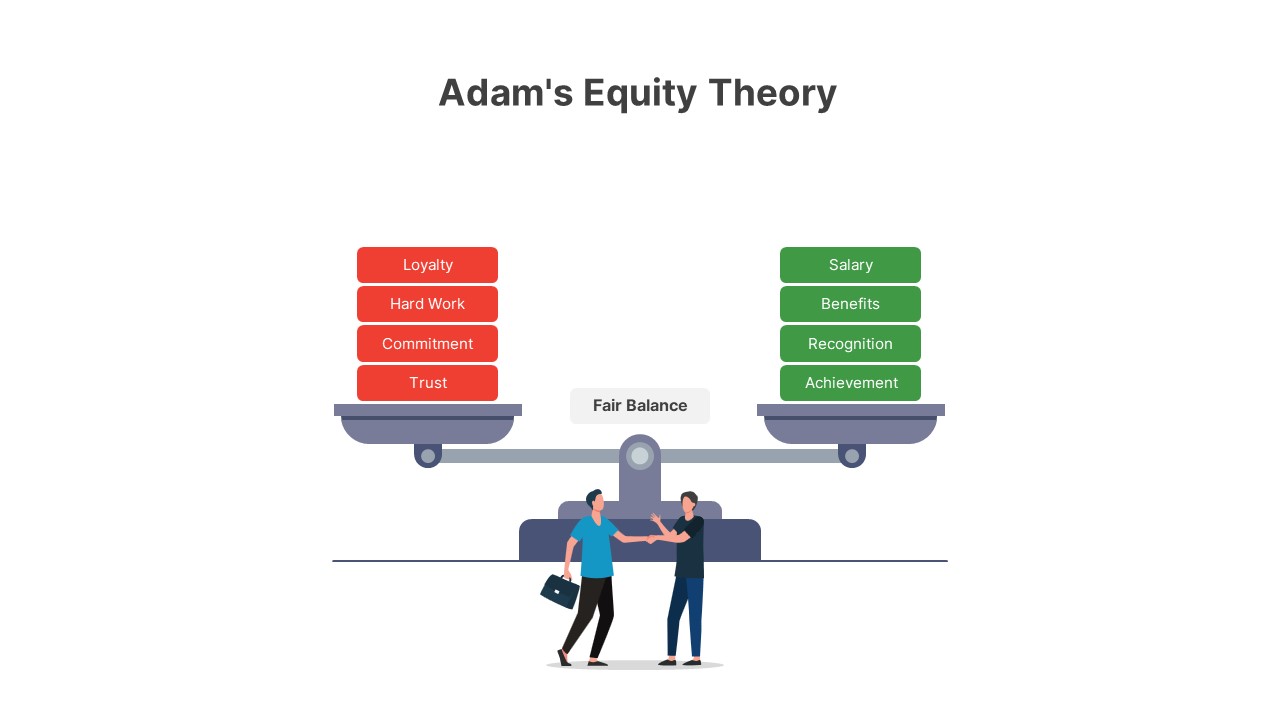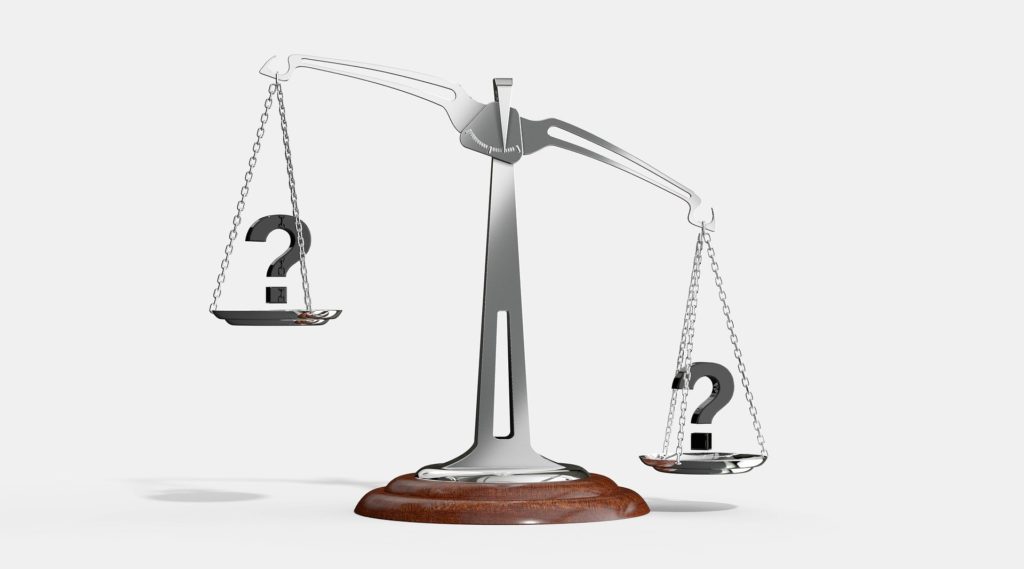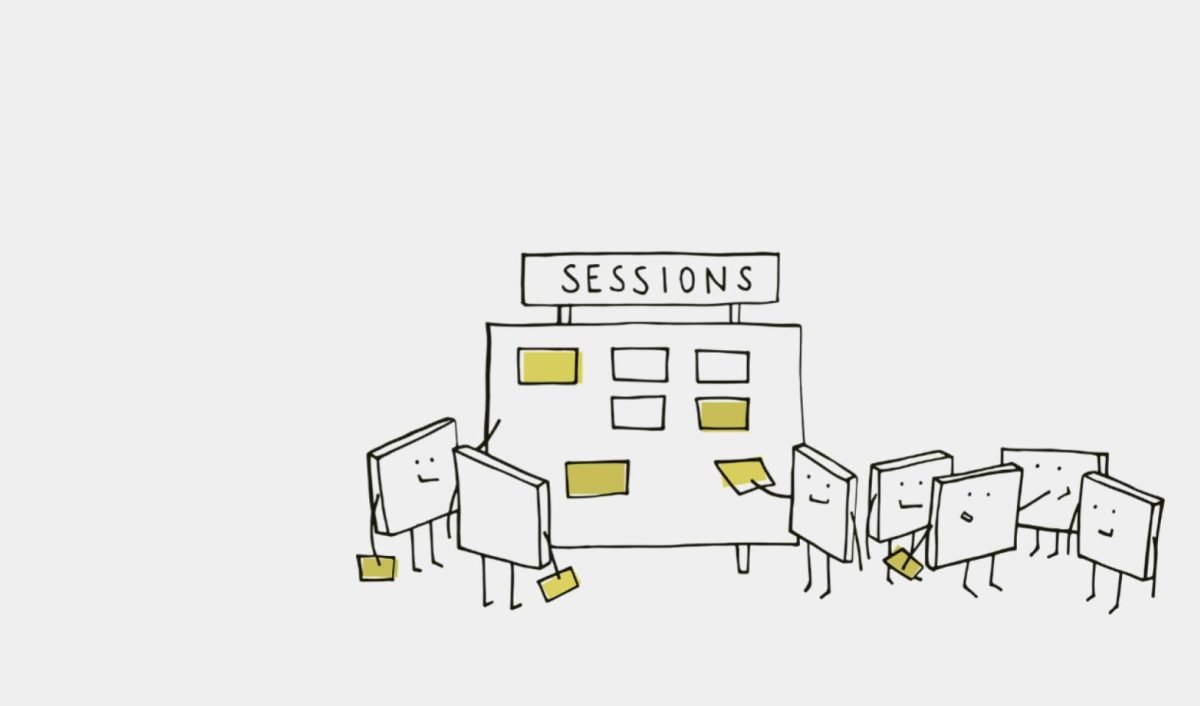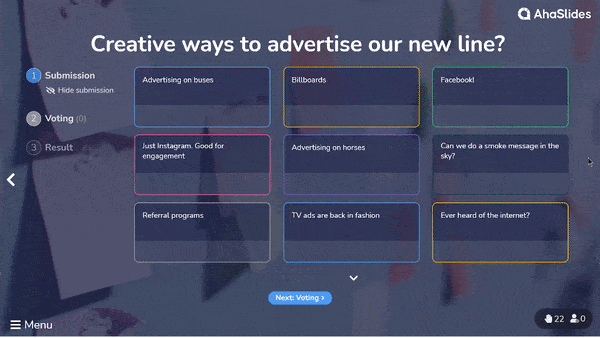你有沒有覺得自己的工作沒有得到應有的重視,或是薪水太低?我們都可能經歷過在工作或人際關係中感到不「公平」的時刻。
這種不公平感或不平等感是心理學家所說的「不公平感」的核心。 公平動機理論.
在這篇文章中,我們將探討公平理論的基礎知識以及如何利用其潛力來創造公平的工作場所。
目錄
提高參與度的技巧
什麼是股權激勵理論?
公平動機理論 專注於探索一個人在工作中的公平感,因為這會直接影響他們的動機。
它是由 約翰·史黛西·亞當斯 1960 世紀 XNUMX 年代興起的“亞當斯公平理論”,因此又稱“亞當斯公平理論”。
依照這個思路,我們每個人都在不斷地計算分數——將自己的投入(例如努力、技能、經驗)與所得的產出/結果(例如薪資、福利、認可)進行比較。我們忍不住將自己的投入產出比與周遭的人比較。
如果我們開始覺得自己的得分與別人不相符——如果我們付出的努力與得到的回報的比例不公平——就會產生一種不平衡感。而根據公平理論,這種不平衡會真正扼殺我們的動機。

股權激勵理論的優點和缺點
為了更好地理解亞當斯的公平理論,我們應該同時考慮其優點和缺點。
優點:
- 它認識到公平和正義在激勵行為方面的重要性。 人們希望感受到自己受到平等對待。
- 解釋如下現象 不平等厭惡 透過行動或感知改變來恢復平衡。
- 為組織提供有關如何以公平的方式分配獎勵和認可可以提高滿意度和績效的見解。
- 適用於各種關係環境,如工作、婚姻、友誼等產生公平觀念的環境。

缺點:
- 每個人對於公平的投入產出比都有不同的定義,因此很難達到完美的公平。
- 僅關注公平,而不關注其他重要因素,例如對管理層的信任或工作品質本身。
- 會促進與他人的比較而不是自我完善,並導致權利感而非公平感。
- 很難明確地測量和量化所有輸入和輸出以客觀地比較比率。
- 不考慮其他 激勵因素 例如成就、成長或歸屬感也會影響動機。
- 如果解決感知到的不平等擾亂了實際公平或現有的內部系統/政策,可能會導致衝突。
雖然公平理論提供了有用的見解,但它也有其限制: 並非所有影響動機的因素都與比較或公平有關。 申請時需考慮多種因素和個體差異。
影響股權激勵理論的因素

根據公平理論,我們不會只在內部比較自己的投入產出比。我們會參考以下四個群體:
- 自我內部:隨著時間的推移,個人在目前組織內的經驗和待遇。 他們可能會用過去的情況反映當前的投入/產出。
- 外在自我:個人過去在不同組織中的經驗。 他們可能會在心裡將目前的工作與他們以前的工作做比較。
- 內部其他人:個人目前公司內的其他人。 員工通常會將自己與從事類似工作的同事進行比較。
- 外部人員:個人組織外部的其他人,例如在其他公司擔任類似職務的朋友。
人們自然傾向於將自己與他人進行比較,以評估社會地位和自我地位。 考慮差異的適當比較組對於公平理論和維持健康的自我認知非常重要。
如何在工作場所應用股權激勵理論
公平激勵理論可以用來創造一個環境,讓員工感覺到他們的貢獻透過公平和一致的待遇得到重視,從而提高他們的積極性。 內在動機讓我們看看公司可以採取哪些措施:
#1. 追蹤輸入和輸出

正式監控員工在一段時間內的輸入和輸出。
常見的輸入包括工作時間、承諾、經驗、技能、責任、彈性、所做的犧牲等。 基本上是員工付出的任何努力或品質。
產出可以是有形的,如薪資、福利、股票選擇權,也可以是無形的,如認可、晉昇機會、靈活性和成就感。
這提供了有關公平感的數據。
#2. 制定明確、一致的政策
獎勵和認可系統應該基於客觀的績效指標,而不是偏袒。
向員工清楚傳達角色、期望和薪酬結構,以消除因不了解公司政策而產生的不滿。
#3。 定期召開回饋會議
利用一對一、調查和離職面談來識別不平等的早期跡象。
回饋應該經常進行,至少每季一次,以便在小問題升級之前發現它們。 定期檢查顯示員工的意見正在考慮中。
跟進問題以形成回饋循環,並以持續的公平精神真正傾聽和考慮員工的觀點。
💡AhaSlides提供 免費調查模板 以便組織快速了解員工的意見。
#4。 平衡有形和無形獎勵
雖然薪資很重要,但非財務福利也會顯著影響員工對公平和公正的看法。
靈活的日程安排、額外的休息時間、健康/保健福利或學生貸款援助等福利可能會抵消一些工人的工資差異。
有效傳達無形資產的價值有助於員工考慮整體薪酬,而不僅僅是孤立的基本工資。
#5。 就變更事宜諮詢員工

在進行組織變革時,讓員工了解情況將使他們了解自己的觀點很重要並獲得認同。
徵求 匿名回饋 了解他們的擔憂,而不用擔心負面後果。
與他們討論替代方案的利弊,找到雙方都同意的解決方案,平衡多個優先事項。
#6。 培訓經理
主管需要接受培訓,以客觀、無偏見地評估角色和員工,並以明顯公平的方式分配工作和獎勵。
他們將被期望解釋法律責任,以避免歧視並確保在薪酬、晉升決定、紀律、績效評估等領域的公平待遇。
#7. 建立理解
建立社交活動、指導計畫和發展項目,讓員工深入了解其他人在維護公平待遇方面所做的貢獻和麵臨的挑戰。
社交活動允許非正式的互動,揭示角色之間的共通性,比假設的更具可比性。
在專案期間,您可以讓不同角色的隊友一起進行腦力激盪會議,以認識每個人貢獻的技能/知識。
協作提升,技能提升
AhaSlides 的團隊腦力激盪功能釋放了每個隊友的力量🎉

總結
從本質上講,公平激勵理論就是專注於我們與周圍的人相比是否受到不公平的待遇。
如果天秤開始向錯誤的方向傾斜,就要小心了——因為根據這個想法,動力即將被拋下懸崖!
按照我們的提示進行小的調整將幫助您平衡規模並讓每個人在未來一段時間內保持參與。
常見問題(FAQ)
什麼是公平理論和例子?
公平理論是一種激勵理論,它建議員工尋求與其他人相比,在他們對工作的貢獻(投入)和他們從工作中獲得的回報(結果)之間保持公平或公平。 例如,如果鮑伯覺得他比同事麥克工作更努力,但麥克得到了更高的報酬,那麼他就不會感覺到公平。 然後鮑伯可能會減少他的努力,要求加薪,或是找到一份新工作來消除這種不平等。
公平理論的三個關鍵面向是什麼?
公平理論的三個主要面向是投入、結果和比較水準。
誰定義了公平理論?
公平理論由約翰史黛西亞當 (John Stacey Adam) 於 1963 年提出。












